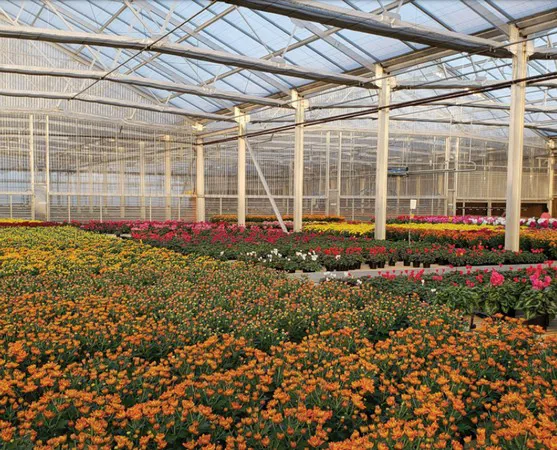Temperature is the most manipulated environmental parameter inside greenhouses and indoor farms. Temperature controls the rate of plant development and thus determines crop production time. It also regulates crop quality attributes including stem elongation and, for some crops, promotes or inhibits flowering. Below are some compelling reasons to deliver are the relatively low temperatures at night, but also some trade-offs that need to be considered. A low night temperature: decreases respiration. Plant respiration uses sugars (primarily generated from photosynthesis) as the energy source for various maintenance processes. The rate of respiration (the rate of sugar consumption) generally increases with temperature. Therefore, a lower temperature decreases respiration during the night when most plants do not perform photosynthesis.
A low night temperature decreases respiration
Less respiration at night translates into a higher concentration of sugars during the day, which can be used to support growth processes such as the formation of new leaves, roots, and flowers.
A low night temperature avoids heat delay of flowering
Heat stress hurts plant growth and flowering. Research has shown that plants can tolerate heat stress much better during the day (in the presence of light) than at night. What constitutes heat stress, therefore, depends on the time it occurs as well as the crop. One example of heat stress is the delay in the flowering of some greenhouse crops.

Short-day plants only flower, or flower earlier, when the night length is longer than some species-specific duration, usually more than 12 hours. The flowering of some short-day plants, including chrysanthemum and poinsettia, is delayed when the night temperature is high. What constitutes a high temperature varies somewhat by species, but nights warmer than around 74° F can delay the flowering of these two crops. Therefore, providing relatively cool temperatures at night can prevent flowering delays of sensitive short-day plants.
A low night temperature lowers the greenhouse fuel bill
It is estimated that around 75 to 80% of greenhouse heating occurs at night. Decreasing the night temperature decreases the amount of energy consumed for heating, even when the day temperature is increased to maintain the same average daily temperature.
The relative energy savings depends on location, time of year, etc., but can be especially compelling in the fall and spring. However, decreasing the night temperature without an offset to the day temperature decreases the average daily temperature, which slows down plant development and increases crop timing. Therefore, if you lower the night temperature without increasing the day temperature, you will need to add time to the crop schedule.
A low night temperature creates a +DIF
Stem elongation of many crops increases as the difference (DIF) between the day temperature is progressively higher than the night temperature. For example, a 72° F day and 63° F night temperature creates a 9° F +DIF. Plants were grown at this +DIF will be taller at flower than plants grown with less of a day/ night temperature differential, especially compared to plants grown on a day that is cooler than the night. Thus, plants are grown at a +DIF might need higher rates of plant growth retardants, or other height-suppressing techniques, to achieve target heights compared with plants grown at a lesser DIF value.
A low night temperature decreases the water vapor-pressure deficit (VPD)
As discussed in a December 2021 article, decreasing the air temperature decreases the water vapor it can hold, decreasing the VPD (and increasing the relative humidity). The air temperature mustn't decrease to the dewpoint, which is when saturation occurs. When this happens, the VPD is zero, water vapor condenses into liquid, and the leaves become wet. This condition is favorable for the spread of pathogens including bacteria and fungi. Generally, maintaining a VPD of greater than 0.3 kPa is recommended for plant production. This translates into a relative humidity of less than 85% at 63° F and 88% at 68° F.
In summary, lowering the night temperature decreases plant respiration, prevents heat delay, and decreases the amount of energy consumed for greenhouse heating from fall through spring. However, to offset a lower night temperature, the day temperature needs to be increased, which creates a +DIF that promotes stem elongation. Finally, consider the effects of temperature on the amount of water vapor in the air to ensure the vapor-pressure deficit is at least 0.3 kPa (relative humidity is less than 88%)
Written by Erik Runke, professor and floriculture Extension specialist in the department of horticulture at Michigan State University.
For more information: Michigan State University
Michigan State University
[email protected]
www.canr.msu.edu
